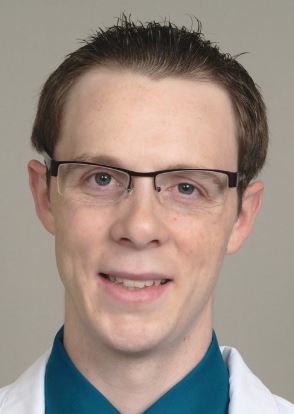“I've been suffering from scoliosis since I was 19 years. I am now 32 years old. Will this problem be corrected with surgery?”
I am suffering from scoliosis since I was 19 years of age. I am currently 32 years old and the pain doesn’t seem to subside. Can surgery help me in correcting my problem?
23 Answers
Like all other treatments for scoliosis, aside from the corrective brace prescribed to adolescents(and adults with scoliosis, chiropractic does not correct, cure or reverse scoliosis. Chiropractic adjustments and therapies help to improve form (therefore, improving function), and induce mobility into the joints. These improvements can decrease pain, increase comfort and improve posture. Chiropractors can also address other symptoms or issues the patient may be experiencing, and help prevent further degradation of the spine.
I am not a surgeon, so you would have to ask a surgeon that question.
Hope this helps....
I am not a surgeon, so you would have to ask a surgeon that question.
Hope this helps....
Surgery for scoliosis is a last resort. It is a very long and challenging operation. I would suggest a more conservative approach, starting with chiropractic adjustments in addition to specific exercises and stretching. Scoliosis has many causes some of which are not well understood. If a chiropractic examination reveals that subluxation (misalignment) in the spine is a contributor, chiropractic adjustments to these subluxations can create a more comfortable and flexible situation. I would not ever allude to the idea that a spine can be straightened with conservative methods, but a spine with improved function (movement and less pain) is achievable.
By this point, your scoliosis is stable, meaning that the curvature will not progress or get worse over time. However, your symptoms can get worse over time. Having scoliosis means that your back and hips and possibly your neck will flair up easier than it would without the curvature. I find that my patients with scoliosis need to do some type of exercising like pilates or yoga or tai chi. These systems are easy on your body and will balance your body and align it, making you less susceptible to injury. If you are around the Pittsburgh area, come in and see me, I can help decrease the symptoms that you get from your scoliosis. I manage many patients with scoliosis.
I would try exercise, physical therapy, chiropractic care, trigger point therapy, etc., before I would try surgery. If you have any questions, or want to schedule, my office number is 412.681.4747
Dr. Joshua cohen
I would try exercise, physical therapy, chiropractic care, trigger point therapy, etc., before I would try surgery. If you have any questions, or want to schedule, my office number is 412.681.4747
Dr. Joshua cohen
Hello. I am sorry to hear of your suffering. Have you tried any conservative therapy such as Chiropractic manipulation, massage or physical therapy? Usually, conservative care can be very beneficial. However, if these treatments prove to be unsuccessful, surgery may be necessary. You should consult a good physician, get X-rays, and have the scoliosis measured and see if there is degeneration occurring as the result of the abnormal stresses from the curvature. Can these stresses be changed conservatively
or is surgery necessary? Always try conservative care first.
I hope this information is helpful.
Take care and be well.
Dr. Eric Miller
or is surgery necessary? Always try conservative care first.
I hope this information is helpful.
Take care and be well.
Dr. Eric Miller
Surgery should always be avoided unless absolutely necessary. Chiropractic can help prevent and even redcue
Joseph G. Estrada
Chiropractor
This is a very complicated question.
I believe if you are able to correct something in the body without surgery, it should be your first option. Surgery of scoliosis for many patients usually involves the use of steel rods to get the bones of the spine into an aligned position. Placing the rods onto the spine will also limit the range of motion for the patient which would then interfere with the patient's normal daily habits such as bathing, dressing, or grooming themselves.
Also because there has been a time of 13 years that the scoliosis has been present, a sudden change to the patient's body can affect the function of the muscles, tendons, and ligaments. What I mean by this is that, the muscles have been developing in their current positions for 13 years. Changing the structure of the body suddenly through surgery is a type of traumatic event that the body must overcome before normal everyday functions can successfully be performed.
Surgery is also not a 100% guarantee that symptoms will be corrected. Many complications can arise post surgery, such as more interference to the nerves and nervous system from the bones being forced into the new positions. Also, the muscles will be stretched and forced to work harder to help increase the stability of the body.
Chiropractors are trained to correct the alignment of the spine with the use of adjustments. Many times, the misalignments of the bones can cause interference onto the nerves and the nervous system which leads to pain and inflammation for the body. Many chiropractors have been successful with decreasing the degree of the curve for the patient's spine. Decreasing the angle of the scoliosis can help take the pressure off the nerves and muscles which will then help to decrease the symptoms that are associated with scoliosis.
I believe if you are able to correct something in the body without surgery, it should be your first option. Surgery of scoliosis for many patients usually involves the use of steel rods to get the bones of the spine into an aligned position. Placing the rods onto the spine will also limit the range of motion for the patient which would then interfere with the patient's normal daily habits such as bathing, dressing, or grooming themselves.
Also because there has been a time of 13 years that the scoliosis has been present, a sudden change to the patient's body can affect the function of the muscles, tendons, and ligaments. What I mean by this is that, the muscles have been developing in their current positions for 13 years. Changing the structure of the body suddenly through surgery is a type of traumatic event that the body must overcome before normal everyday functions can successfully be performed.
Surgery is also not a 100% guarantee that symptoms will be corrected. Many complications can arise post surgery, such as more interference to the nerves and nervous system from the bones being forced into the new positions. Also, the muscles will be stretched and forced to work harder to help increase the stability of the body.
Chiropractors are trained to correct the alignment of the spine with the use of adjustments. Many times, the misalignments of the bones can cause interference onto the nerves and the nervous system which leads to pain and inflammation for the body. Many chiropractors have been successful with decreasing the degree of the curve for the patient's spine. Decreasing the angle of the scoliosis can help take the pressure off the nerves and muscles which will then help to decrease the symptoms that are associated with scoliosis.
It depends on how severe the curvature is. I always recommend seeing a chiropractor before you commit to surgery.
Sorry that you have been suffering from this condition. More history would have to be known to project a successful clinical outcome. History and information such as X-ray review for degree of curve.
Yours in Chiropractic,
BOB
Yours in Chiropractic,
BOB
There are surgical procedures for severe cases. But I am not a surgeon so your question is best directed to a surgeon who deals with scoliosis. How bad is your scoliosis? What are your symptoms? People with scoliosis CAN suffer from any of the types of back and neck pain that people without scoliosis suffer from. It is pissible to relieve symptoms without surgery in many people, mostly through corrective exercises.
Your question is very complex and with the limited amount of data provided it is impossible to answer with any certainty. Scoliosis has poor outcomes with surgery and with nonsurgical treatments. You will need to have a comprehensive work up with a competent neurosurgeon and then get another opinion. The options for surgical interventions are extensive, and varied. You have to understand the difference in technique and approach from a neurosurgeon vs and spinal orthopedic surgeon and if you are a actual candidate for surgery at all.
Most people who are surgical candidates for scoliosis usually know at a younger age. Surgery is recommend if there is a curve over forty degrees. Bracing might still be an option and exercises. If you have not seen an orthopedist or scoliosis expert this might be the time to do so. A chiropractor can help with the pain and some are scoliosis experts.
If it's greater than 32 degrees, then surgery will be important, but if not, no surgery is required. Yes, surgery can correct scoliosis, but there is a price for the surgery itself plus physical disabilities you'll have for the rest of your life. Rods will prevent motion in the spine.
Depending on the severity of the scoliosis. Typically, surgery is not required, but may need periodic chiropractic care to maintain your quality of life. Surgical intervention may be needed in the future if you have possible compression fractures due to osteoporosis.
Caitlin Zietz
Chiropractor
Hi there,
I would suggest you talk to your family doctor or local chiropractor regarding your pain. Chiropractic care can likely manage your symptoms depending on the degree of curvature. Surgery is usually done earlier in life. However, discuss this with your physician for confirmation. Without an X-ray, I am unable to determine severity or prognosis.
Best of luck,
Dr. Caitlin Zietz, B.Sc., D.C.
I would suggest you talk to your family doctor or local chiropractor regarding your pain. Chiropractic care can likely manage your symptoms depending on the degree of curvature. Surgery is usually done earlier in life. However, discuss this with your physician for confirmation. Without an X-ray, I am unable to determine severity or prognosis.
Best of luck,
Dr. Caitlin Zietz, B.Sc., D.C.
Deborah C. Terry
Chiropractor
This is a tough question to answer without seeing you in-person or your most recent X-Rays. Much of the success in treating scoliosis or relieving its pain depends upon how dramatic the curvature may be. Surgery is generally recommended when the scoliosis is significant enough to cause: 1.) organ compromise (such as breathing difficulty or irregular heartbeats or 2.) It is severe enough to make it difficult for the person to perform basic activities of daily living in a manner that is safe (ex: person is bent so far forward or rotated that they cannot clearly see to turn a light switch on the wall off/on) or 3.) It is progressing rapidly and is causing degenerative changes through out the spine (EX: bone spurs, disc protrusions, collapsed vertebra) Surgery is usually recommended when a scoliosis curve is 45-50 degrees and/or it progresses/increases more than 5 degrees in one year. If your pain is constant, your scoliosis has been deemed progressing, your quality of life is impacted, then surgery will have some benefits. It will reduce your pain but may not completely alleviate it. I wish I could say it was an exact science/guarantee your pain would resolve. Everyone is different. Perhaps, this is not what you want to hear right now. Many times patients come to these forums seeking answers or just want someone to tell them "everything is going to be ok" and/or truly listen to them. Chiropractic has been shown to mildly improve the pain of scoliosis and slow its progression for people with mild curvature. There are specific techniques that are still under review as being successful versus nonsense (EX: the CLEAR Scoliosis method sources are all over the map in terms of stating it really works or is pseudo science - plus it is very expensive and not covered by insurance ). I have treated mild cases and have seen results in terms of decreased pain and reduction in the curvature by 10-15 degrees over the course of 6 months to a year. Maintaining the improvement is also an issue. Many times patients stick with exercises and therapy while in an active treatment program. However, after they are discharged they feel "normal" and stop doing their exercises and stretches. This allows for the scoliosis to once again progress and cause pain. If you have exhausted all avenues of conservative care chiropractic, acupuncture, and physical therapy then surgery is the last option. Even if you seek a chiropractor or physical therapist to treat your scoliosis and pain you always need to have an orthopedic scoliosis specialist as part of your care team. Again, if you have tried all other treatment options and are still experiencing pain then surgery may alleviate it or at least minimize it.
To properly address this question, I would have to ask you some of the following. Has there been any type of intervention, such as chiropractic? Have you ever had a standing scoliosis screening x-ray? This is the only to accurately determine the Cobb Angle of Scoliosis which is the gold standard form of measurement.
Depending on the angle, this will essentially provide the practitioner as how to proceed. A Cobb angle of 10 degrees or less is always considered mild and would be a great candidate for strictly alternative therapies (chiropractic, physiotherapy and/or acupuncture). Cobb angle between 10-15 degrees is also a candidate for alternative therapy, however, the practitioner may want to consider an Orthopedic consult depending the the rate of progression over time, the character and frequency of symptoms. If the Cobb angle is greater than 15 degrees, this is an absolute indication for an Orthopedic consult because it is possible that the curvature is severe enough that it will start to impinge on and affect certain internal organs.
For example, if it is a mid thoracic scoliosis with a Cobb angle of 22 degrees, the thought is that it could theoretically affect the lungs. And so the typical patient in this situation could present with dyspnea with or without exertion, shortness of breath and cyanosis. If the scoliosis is in the lumbar region, the areas of concern would be the kidneys, liver, intestines and reproductive organs.
So, it all depends on the Cobb angle and the only way to appropriately arrive at the correct angle is via a standing scoliosis screening x-ray.
Depending on the angle, this will essentially provide the practitioner as how to proceed. A Cobb angle of 10 degrees or less is always considered mild and would be a great candidate for strictly alternative therapies (chiropractic, physiotherapy and/or acupuncture). Cobb angle between 10-15 degrees is also a candidate for alternative therapy, however, the practitioner may want to consider an Orthopedic consult depending the the rate of progression over time, the character and frequency of symptoms. If the Cobb angle is greater than 15 degrees, this is an absolute indication for an Orthopedic consult because it is possible that the curvature is severe enough that it will start to impinge on and affect certain internal organs.
For example, if it is a mid thoracic scoliosis with a Cobb angle of 22 degrees, the thought is that it could theoretically affect the lungs. And so the typical patient in this situation could present with dyspnea with or without exertion, shortness of breath and cyanosis. If the scoliosis is in the lumbar region, the areas of concern would be the kidneys, liver, intestines and reproductive organs.
So, it all depends on the Cobb angle and the only way to appropriately arrive at the correct angle is via a standing scoliosis screening x-ray.
It might, but if you haven't tried Chiropractic, give that a chance first. There are Chiropractors that specialize in treating scoloisis.
Have you tried Chiropractic care? If you have and it did not help to ease the pain the physical therapy my help. Surgery would be the last option but probably the only option for correction of a severe scoliosis at your age
Samuel Cirone
Chiropractor
Before any invasive surgery, I would recommend seeing your local chiropractor for an assessment, and treatment. I have treated many patients with scoliosis and have helped alleviate pain. I would also recommend stretching in the morning, afternoon, and night. Chiropractic care will help, as well as the work you will do at home.
Surgery may relieve the pain, but will not correct the scoliosis. The surgeon may put 2 metal rods in your back to keep it from getting worse. As a chiropractor, we adjust subluxated joints to get them to move more freely. An ABC practitioner will check for meninges that are stuck inside the spinal canal, the meninges can cause the spine to twist, hence attributing to the spine twisting as in scoliosis.








